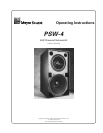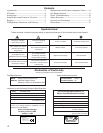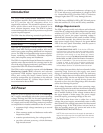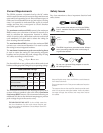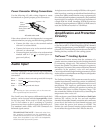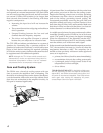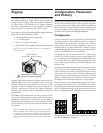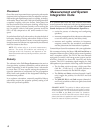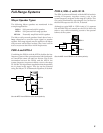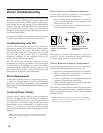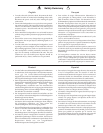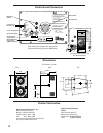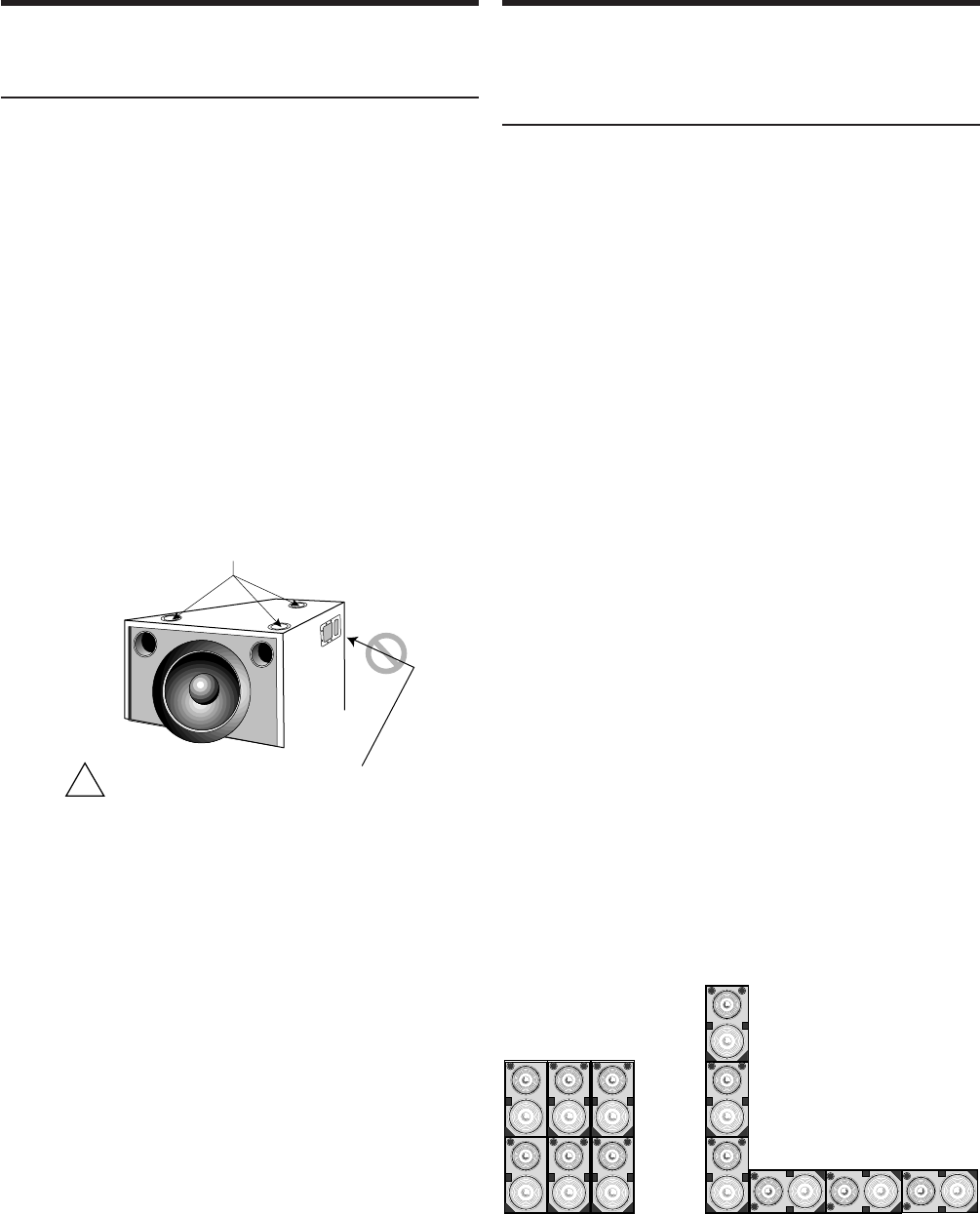
7
Rigging
The PSW-4 weighs 177 lb (80.3 kg). The maximum rec-
ommended load for a single cabinet with aircraft pan
fittings is 600 lb (273kg). This working load is based on a
5:1 safety factor. The PSW-4 has six rigging brackets
(three on top and bottom). Each bracket is capable of
supporting the full working load of the cabinet.
There are four types of interchangeable rigging brackets,
each fastened by six Phillips screws:
• aircraft pan fittings (ring and stud)
•
3
/8”-16 nut plates
• M-10 x 1.5 metric nut plates
• blank plates (if no rigging brackets are requested)
NOTE: Units with nut plates are rated for the weight of
one cabinet only.
rigging brackets
three on top, three on bottom
Handles are for carrying only.
Do not use them for rigging!
!
Rigging load ratings assume a straight tensile pull and
that the cabinet is in new condition with aircraft pan
fittings. If the preceding conditions are not met, or the
rigging is worn or damaged, the load ratings can be
reduced significantly. Inspect the rigging hardware
regularly and replace worn or damaged components
immediately.
The cabinet, exposed electronic circuitry, and drivers can
receive protective treatment that permits safe use in wet
conditions. Additionally, a rain hood can be fitted to
shield cables and electronics. Do not install a unit outdoors
without weather protection! Contact Meyer Sound for more
information.
NOTE: All Meyer Sound products must be used in accor-
dance with local, state, federal, and industry regulations.
It is the owner’s and/or user’s responsibility to evaluate
the reliability of any rigging method for their application.
Rigging should be done only by experienced professionals.
Configuration, Placement,
and Polarity
Designing a full-range system requires an understanding
of how subwoofers respond when grouped together,
how they interact with nearby walls and floors, and how
their location in a system affects the choice of polarity to use
for other speakers. These topics are introduced as back-
ground for the section
Full-Range Systems
.
Configuration
A single subwoofer has an essentially omnidirectional
coverage pattern. A horizontal line with two adjacent
subs narrows the horizontal coverage area, without
changing the vertical coverage, compared to one sub. A
vertical stack of two subs narrows the vertical coverage
without changing the horizontal coverage. In both cases,
there is 3 to 6 dB SPL of on-axis addition.
Increasing the size of the horizontal or vertical array
from two to three subs further narrows the respective H
or V coverage without changing the corresponding V or
H coverage. Both the vertical and horizontal three-sub
arrays provide approximately 10 dB SPL addition more
than one sub.
Increasing the number of subs in the horizontal or vertical
array increases the corresponding H or V directional
control and the system SPL. A properly designed vertical
array steers low frequencies to include balconies and
upper tiers but avoids unnecessary interaction with the
ceiling; a horizontal array focuses low frequencies for
the longer throw distances required by large venues.
The three-by-two array (below left) narrows the H and V
coverages, and produces 10 to 15 dB SPL more than a
single sub. Combining the vertical and horizontal arrays
in an L-configuration (below right) provides more on-axis
SPL and directional control than the three-by-two array.
Both the three-by-two group and L-configuration increase
the SPL and directional control.



